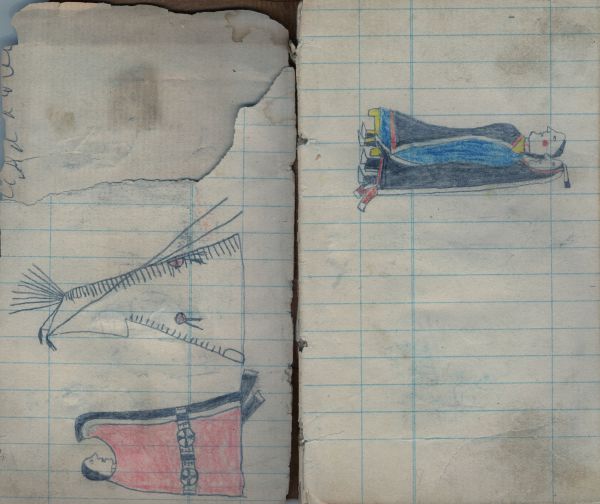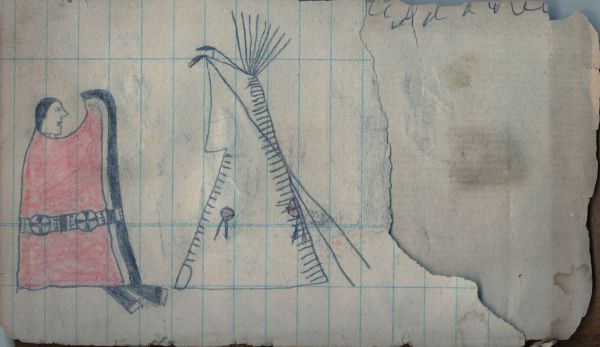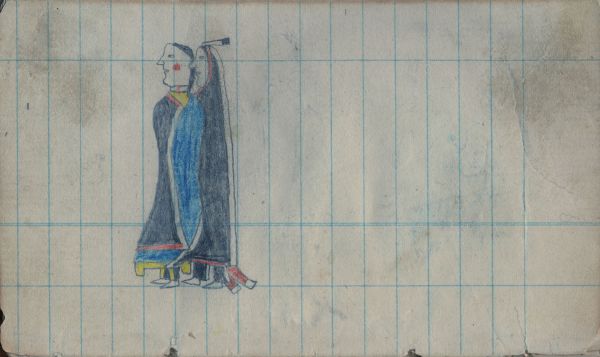Courting red robe with blanket strip in front of tipi | Couple walking
Ethnographic Notes
Here we are, on our first date. The artist has brought a stylish "extra wide" courting blanket composed of a dark blue and a red blanket sewn together, with a wide, beaded strip in classic Cheyenne motifs. He and the young lady are "parked" in front of her tipi, seated on the ground perhaps twenty feet from her front door. We see that the artist is at the right, with the two ends of his breech cloth lying on the ground. The blanket is a strategic accessory to provide a modicum of privacy from her mother, who may be expected to glance out, and even issue directives ("NO touching!") every other minute.
The manner in which the girl's tipi is decorated reveals that her family are socially prominent. The short, horizontal lines down the front of the lodge (shown here to the left side) represent the wooden sticks with which the two edges of the cover were pinned together. The short, horizontal lines down the back of the tipi (seen to the right), however, represent rows of embroidered decoration, either in porcupine quillwork, dyed corn husk, or headwork.
A leading Cheyenne institution was the Women's Sewing Society, whose members created masterworks of embroidery. This particular tipi motif, called the "stripe design" (Coleman, 1980: ) could be produced only by a member of the society; and membership was restricted only to senior women with a spotless reputation. An errant daughter who became the target of gossip might force her mother to resign her society membership out of shame---hence the tight rein, and the family's close oversight. Figure 20 shows an 1898 photograph of a Cheyenne "Striped Tipi" of this type.



grace andrew
8/18/17, 6:12 AM
Your article covers all the major aspects of the topic. Simply amazing. http://machinesembroidery.weebly.com/